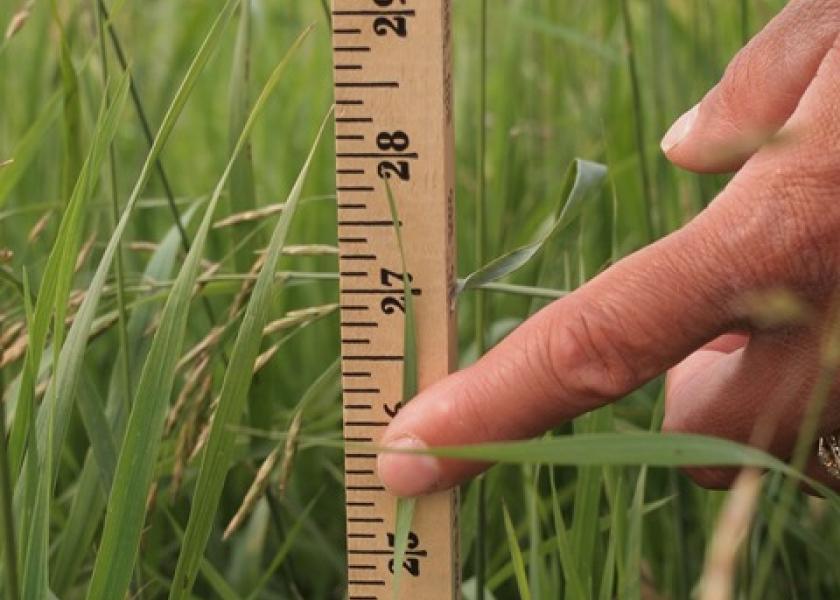Grazing Stick Helps Monitor Pastures, Rangelands

Monitoring grazing resources can help producers determine when to remove livestock from a pasture to prevent overgrazing.
The North Dakota State University Extension Service, with support from the Natural Resources Conservation Service, has developed a grazing monitoring stick (GMS) as a tool to help producers measure and monitor pasture and rangeland utilization. The GMS, a modified yardstick with information related to grazing management, measures forage utilization.
“Forage utilization is a measure of the percent of the plant that has been consumed and/or destroyed by grazing animals,” says Miranda Meehan, NDSU Extension livestock environmental stewardship specialist. “Utilization should be monitored throughout the grazing period to ensure you achieve proper utilization, maintain plant health and prevent overuse of key species.”
As a general rule of thumb, proper utilization is achieved when 50 percent of the total plant weight (not height) of key species has been utilized, according to Fara Brummer, area Extension livestock systems specialist at NDSU’s Central Grasslands Research Extension Center.
To determine utilization, producers must take measurements during the grazing period and within three days of livestock being removed to make sure target grazing goals have been met.
To obtain the most accurate measurement of utilization, take measurements from grazed and ungrazed plants of the same species on the same date so the measurements come from plants at the same stage of growth.
Here are the steps for using the GMS:
- Measure the height of key forage species. Take a minimum of 30 measurements for each key species.
- Calculate the plant height removed by dividing the grazed height of the plant by the ungrazed height. Subtract this amount from 1.
- Multiply this amount by 100 to determine the percent of height removed.
- Use a height-to-weight conversion chart (Page 5, http://tinyurl.com/NDSUGrazingStick) to estimate the percent of weight removed.
“Monitoring utilization of range and pasturelands using the GMS provides a way to assess how much forage livestock have consumed, helping determine when livestock should be removed from a pasture,” says Kevin Sedivec, NDSU Extension rangeland management specialist. “The GMS can assist North Dakota livestock producers and other land managers in monitoring forage for long-term grass production.”
Visit http://tinyurl.com/NDSUGrazingStick for more information on using the GMS and http://tinyurl.com/buyGrazingStick to purchase a stick, or contact your county Extension office.
Source: North Dakota State University Extension Service







